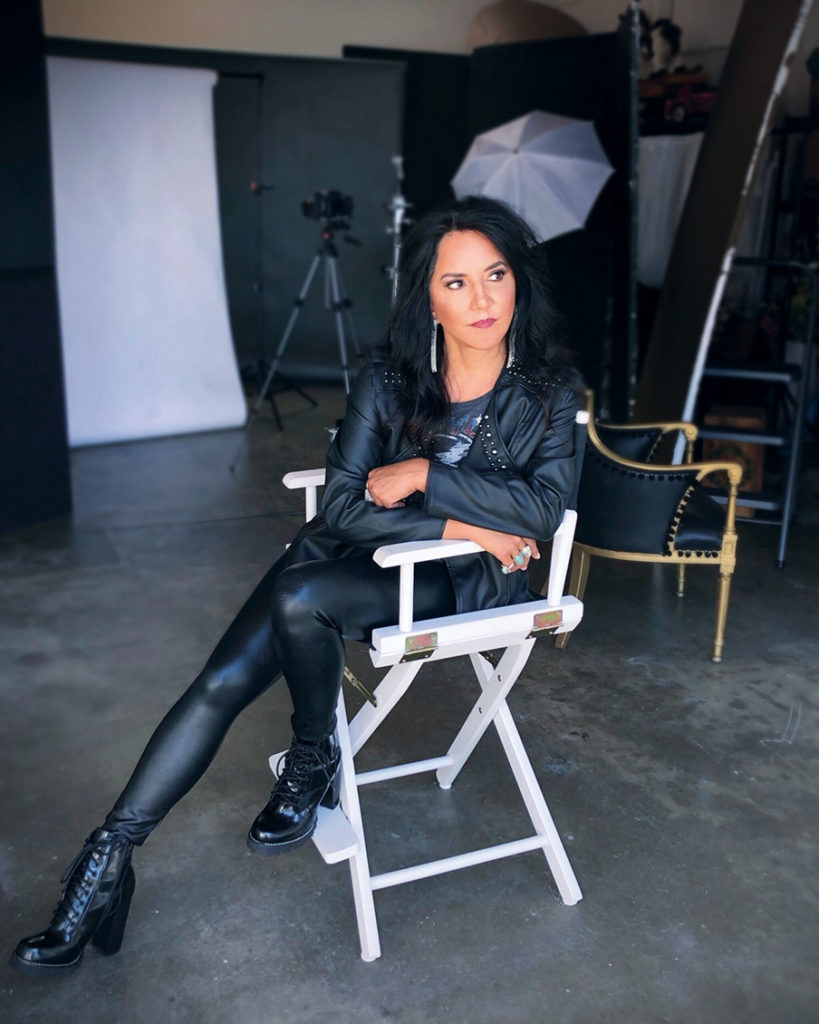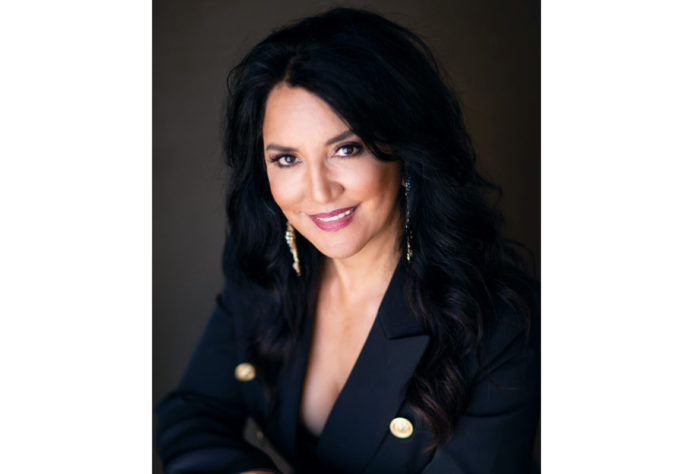From founding and operating numerous art galleries to dealing art and creating the FNX television shows “Art in the City” and “This is Indian Country,” Ruth-Ann Thorn has blazed her own trail in the art world, fusing her tribal heritage with a sense of verve and entrepreneurship. Her latest venture, Imprint Registry, revolutionizes how artists protect their intellectual property. We had the opportunity to speak with Ruth-Ann and here is what she had to say…
How did you originally discover your love for art?
My mother is an artist, so I grew up around the arts. I was taken to art openings and exposed to art at a young age. As a child, you don’t really know any different. I liked art, but I didn’t really think much of it. My mom always wanted my sister and I to take art classes. We both rebelled against it at the time, so it’s ironic that my sister ended up being a culinary artist and I ended up being an art dealer. I think eventually whatever your parents subject you to, ends up rubbing off at some level.
How does your tribal heritage impact your work in the arts?
What really defines Native people, as the smallest minority group on this northern continent, is our culture. All of the arts within any culture defines who we are within that culture. I didn’t start out representing Native artists – I represented all different types of mainstream artists. However, in the last 15 years, I’ve been focusing primarily on Native art, and am involved with a lot of the tribes doing large builds in Indian Country that are trying to bring more of their culture into their builds.
At the beginning of the tribal gaming industry growth, many Native people initially wanted gaming operations to look like Vegas – and this was hiding our culture. Now that there has been 30 plus years of tribal gaming, we are holding our heads high and saying, ‘You know what? When guests come into our spaces, we want them to feel welcomed and we want to invite them to know who we are as Native people,’ which is very diverse from tribe to tribe.
What is your process for discovering inspiring new artists?
I do a lot of traveling. I visit a lot of art fairs and also have a show that I’m doing on First Nations Experience (FNX), called This is Indian Country. It’s a 30-minute entertainment series, where you’ll see four or five Native creators featured in each episode. The show allows me to go to different regions to film. Because of this show, I get a lot of people who reach out to me and say, ‘Oh, I’d like to be on your show,’ or ‘I have a friend or a cousin who is talented.’ That is how I’ve found a lot of inspiring artists. And it’s not just visual arts that we feature. We highlight culinary arts, dance, music and some out of the box things like comedians, tattoo artists, and people who are keepers of water and land. I call it all art because as Native people, I think we look at our lives as being artistic in whatever we are supposed to be giving to the world.

Tell us about your daughter’s work with the American Heart Association’s Go Red for Women and how that came about.
Sometimes talent skips a generation. My daughter, who is 15 now, attends the Idyllwild Arts Academy in Idyllwild, CA. She never went to daycare, and instead, my grandma took care of her while I was working, which was very traditional. My mom taught my daughter how to paint. At that time, I had three or four art galleries, so I was gone a lot. During the different seasons, we always put up different displays in the windows. One year I forgot to order decorative glass hearts for the window display. Long story short, I told my mom, ‘I missed the windows.’ She said, ‘No problem. We’ll just make them.’ So, she and Isabella made these hearts, and at the time, my daughter was three or four years old. We put them in the windows, and someone from the American Heart Association came by and bought all of them for their offices. That opened up a whole window for this relationship with Isabella, who’s work is known as Bella Hearts, 12 years later. She’s became the national child artist for the American Heart Association and has visited Rady’s Children’s Hospital in San Diego and Sunrise Hospital and Medical Center in Nevada to meet with kids and give them these heart paintings. She’s also donated her designs to the American Heart Association’s Go Red for Women initiative. That’s how that really unique partnership came to be.
What other projects are you most excited about right now?
One of the things that I’ve been working on over the last two years is a company called Imprint Registry, which uses a Web 3.0 technology based on blockchain. It’s a way for artists to secure their intellectual property. This is really important for Native people – that these designs not end up in the hands of large corporations without artists being compensated, which historically, has happened so many times. It’s as simple as that. We had the very first rollout of the technology in its beta form at the SWAIA Native American Art Market this year and onboarded 400 artists to the platform.
With this technology, when an artist sells their art, rather than making a paper certificate of authenticity, they can transfer an electronic certificate into a collector or patron’s electronic wallet. It allows the collector to have assurance that this is an authentically made piece of art by a Native artist, and then further down the road, if a collector decides to sell that piece, a portion of that sale will monetize back to the artist every time it’s resold. The most important layer is it acts as a worldwide registry for artists. Down the road, if an artist is no longer alive, it becomes a historical document for each piece of art.
Of all the things I’ve done, helping to preserve art and culture within our Native communities with this technology is what I believe will have the most impact long term. Artists can sign up at imprintregistry.com and can start onboarding their work to the platform. When an artist sells a piece of art, they can have the buyer sign up and transfer the registry to that person who now owns their art.
Ruth-Ann Thorn can be reached by calling (619) 895-3027 or email [email protected].















































